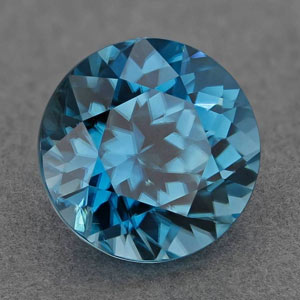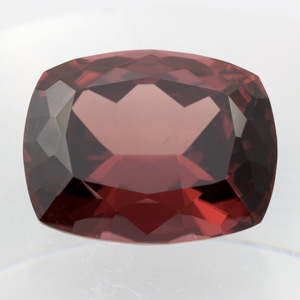zircon
Zircon, a captivating gemstone, derives its name from the Arabic word "zargun," meaning "golden-coloured." Composed primarily of zirconium silicate, zircon showcases a brilliant range of colours, including fiery reds, vibrant blues, and dazzling greens.
Geologically, zircon forms in a variety of environments, including igneous rocks and sedimentary deposits. Notable sources include Sri Lanka, Australia, and Brazil, each yielding distinctive colour varieties.
What distinguishes zircon is its remarkable dispersion, a quality that disperses light into a spectrum of vibrant flashes, earning it the nickname "earth's most sparkly gem." This dispersion, even higher than that of diamond, adds to its fiery brilliance when properly cut and polished.
One fascinating fact about zircon is its use in dating geological samples, as it contains trace amounts of radioactive isotopes that decay over time, allowing scientists to determine the age of the Earth's crust. Beyond its scientific importance, zircon's dazzling beauty continues to make it a cherished gemstone among collectors and connoisseurs worldwide.
Click on the terms in the table below to discover their meaning



Click on the terms in the table below to discover their meaning
| Name | Zircon |
|---|---|
| Category |
Nesosilicate |
| Chemical Formula | ZrSiO4 |
| IMA Symbol | Zrn |
| Crystal System | Tetragonal |
| Crystal Habit | Commonly as tabular to prismatic crystals, with square cross sections; also as irregular grains, massive |
| Twinning | Geniculated |
| Cleavage | Poor |
| Fracture | Conchoidal |
| Tenacity | Brittle |
| Hardness (Moh's Scale) |
7.5 |
| Specific Gravity | 4.6 - 4.7 |
| Diaphaneity | Transparent to opaque |
| Colour | Colourless, yellow, orange, red, pink, purple, blue, green, yellow-green, brownish-green, reddish brown, grey |
| Streak | White |
| Lustre | Adamantine to vitreous |
| Optical Class | Uniaxial (+) |
| Refractive index | nω = 1.925 - 1.961 |
| nϵ = 1.980 - 2.015 | |
| Birefringence | δ = 0.055 |
| Dispersion | Rd = 0.039 |
| Pleochroism | Weak |
| Clarity | Type II |
| Notable Varieties | Blue Zircon, Hyacinth (Jacinth) Zircon, Star Zircon (displays asterism) |
References
Hudson Institute of Mineralogy. (2023). Zircon. Retrieved from Mindat.org: https://
Mineralogical Society of America. (2001). Zircon. In J. W. Anthony, R. A. Bideaux, K. W. Bladh, & M. C. Nichols (Eds.), Handbook of Mineralogy. Chantilly, VA 20151-1110, USA: Mineralogical Society of America. Retrieved from https://
Schumann, W. (2013). Gemstones of the World (17th ed.). (D. Shea, & N. Shea, Trans.) New York: Stirling Publishing Company.